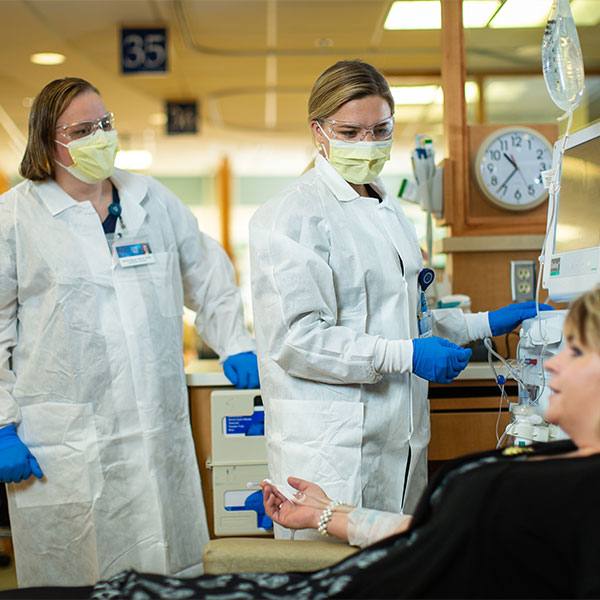-
Biotherapeutics
A Step Toward Bioengineered Transplantable Livers

More than four million American suffer from chronic end stage liver disease, according to the Centers for Disease Control and Prevention, and a liver transplant can mean the difference between life and death for some patients. However, livers are in short supply, and the number of people awaiting new livers far exceeds the number of donor livers available.
To address the acute shortage of donor livers, Mayo Clinic Center for Regenerative Medicine has prioritized developing bioengineered transplantable human livers. Early research published in the October 14 edition of Nature Biomedical Engineering demonstrates for the first time, that a clinically relevant tissue-engineered liver graft implanted in pigs shows indications of vascular function similar to a normal donor liver. The research solves a critical first step in bioengineering transplantable livers and could accelerate development of bioengineered organs as a viable alternative to donor organs.
In order to develop the implantable graph, the pig liver is decellularized – a process which removes all of the cells from the liver. This creates an empty structure, called a bio-scaffold with the original architecture, mechanical properties and vascular network of a normal liver. The bio-scaffold is recellularized with cell types necessary to restore normal function and blood flow, in this case endothelial cells.
“Our research discovered that liver cells in the graft show signs of regeneration like a normal liver. The endothelial cells that line blood vessels change their appearance and become liver-like so no anti-coagulation is needed to prevent clotting of the graft,” says Scott Nyberg, M.D., Ph.D., final author on the paper. “This discovery gives hope that solutions to the organ shortage are on the horizon.”
At this stage of the research, the native livers are left in similar to kidney transplants and the graphs are recelluarized with only endothelial cells. The next step will be to use both endothelial cells and hepatocytes (liver cells) and remove the native liver to allow for clinically correct placement of the bioengineered liver.
Mayo Clinic’s research in pigs is preliminary, and is not yet ready for human studies. The research is a collaboration between Mayo Clinic and Miromatrix Medical to advance the development of bioengineered organs.
“The published work solves a problem, essentially to ability to create a functional vasculature that could bring nutrients to the engineered tissue and take away the waste, that has delayed the advancement of creating advanced tissues and organs to help treat patients,” says Jeff Ross, Ph.D., CEO of Miromatrix. “Having solved this issue, we are now performing the next important step of transplanting bioengineered livers with functional liver cells into pigs, a critical next step in moving the therapy into the human clinical trials.”







